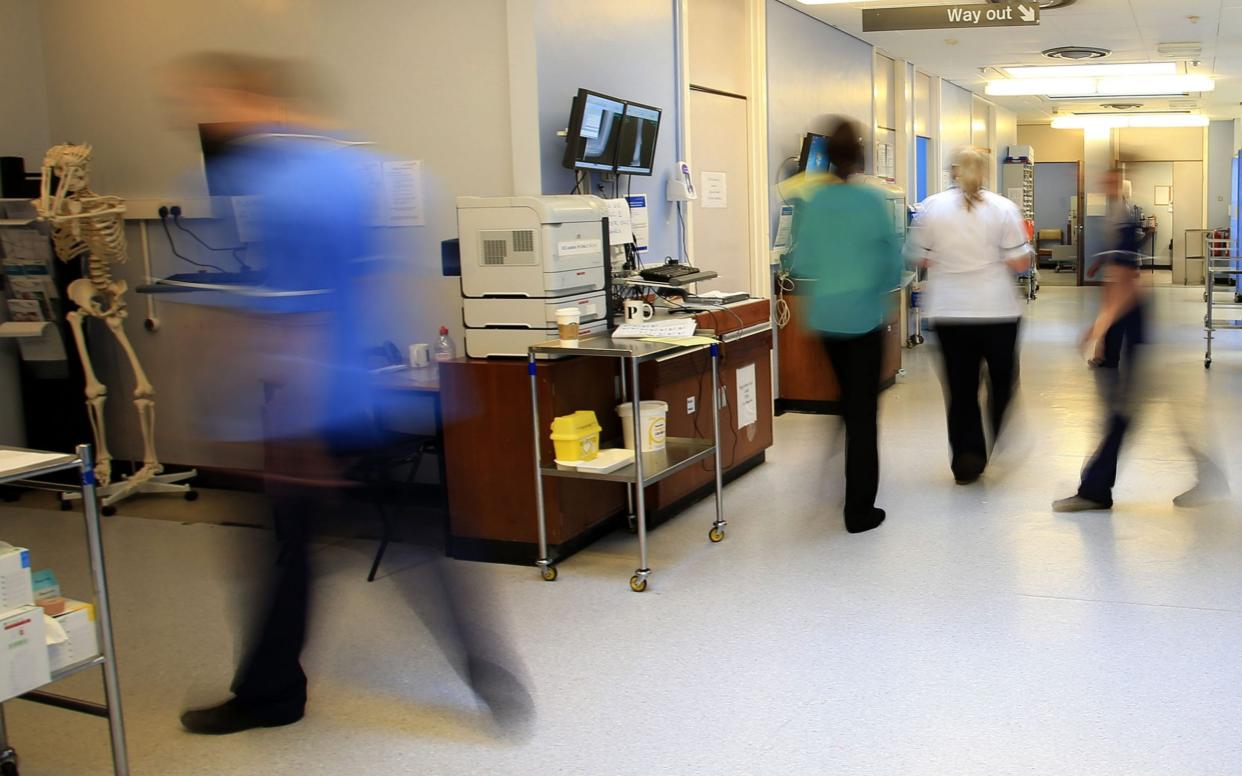Up to nine in 10 infected nurses and doctors caught coronavirus in hospitals at peak of crisis


Up to 90 per cent of nurses and doctors who caught coronavirus during the height of the pandemic picked it up in hospitals, research suggests.
Modelling by Public Health England (PHE) also suggests one in five patients who got the virus became infected on wards.
Scientists have called for a war to be waged on Covid-19 transmission within hospitals, in the same way the NHS has previously successfully battled superbugs such as MRSA.
They warned that a lack of physical distancing between staff – not just on wards, but also in canteens, offices, and corridors – could be fuelling the spread of the virus.
A report by the Royal Society's Data Evaluation and Learning for Viral Epidemics (Delve) group, which provides advice to the Government’s Scientific Advisory Group for Emergencies (Sage), examined a number of studies.
Among them is modelling by PHE, dated May 20, which suggests that "approximately 20 per cent of infections in inpatients, and 89 per cent of infections in healthcare workers, were due to nosocomial [hospital-acquired] transmission".

Despite widespread advice to the public to practice social distancing, it was not until May 18 that PHE updated itsown infection control guidance advising trusts on how to keep workers apart, and it was not until June that all hospital staff were advised to wear masks.
Researchers from Delve said their own estimates, which covered a period after the peak, suggested that in the six weeks from April 26 to June 7 around 10 per cent of all Covid-19 infections in England were among frontline health and care workers.
The study also suggests that, during that period, at least one per cent of patients with the virus acquired it in hospital.
Dr Guy Harling, from University College London, said: "We can see things like inconsistent use of masks and PPE. We can see a lack of physical distancing … between staff, between patients and between staff and patients. So not just on wards or in theatres but also in canteens, and offices in corridors."
Dr Nigel Field, the chairman of the Delve working group, said: "We'd like to see a really ambitious and comprehensive approach to the prevention of Covid transmission in hospitals and care settings of the kind that was really successfully implemented for MRSA."
Researchers said shortages of PPE, lack of testing of staff and the failure to advise general mask-wearing may have fuelled the spread , but added that there was a lack of data to show the impact of any particular interventions.
They said staff would also have been at greater risk of Covid-19 than the general public because they were more mobile and likely to be using public transport to get to work during lockdown.
Professor Dame Anne Johnson, professor of infectious disease epidemiology at University College London, said: "In the beginning, we really didn't understand the extent of the asymptomatic issue and the difficulties of staff social distancing.
"They were aware they were using PPE – once it got going – in these very acute settings, but because there was less recognition of infection that was in other parts of the hospital then of course there was transmission going on in those environments."

 Yahoo News
Yahoo News 
